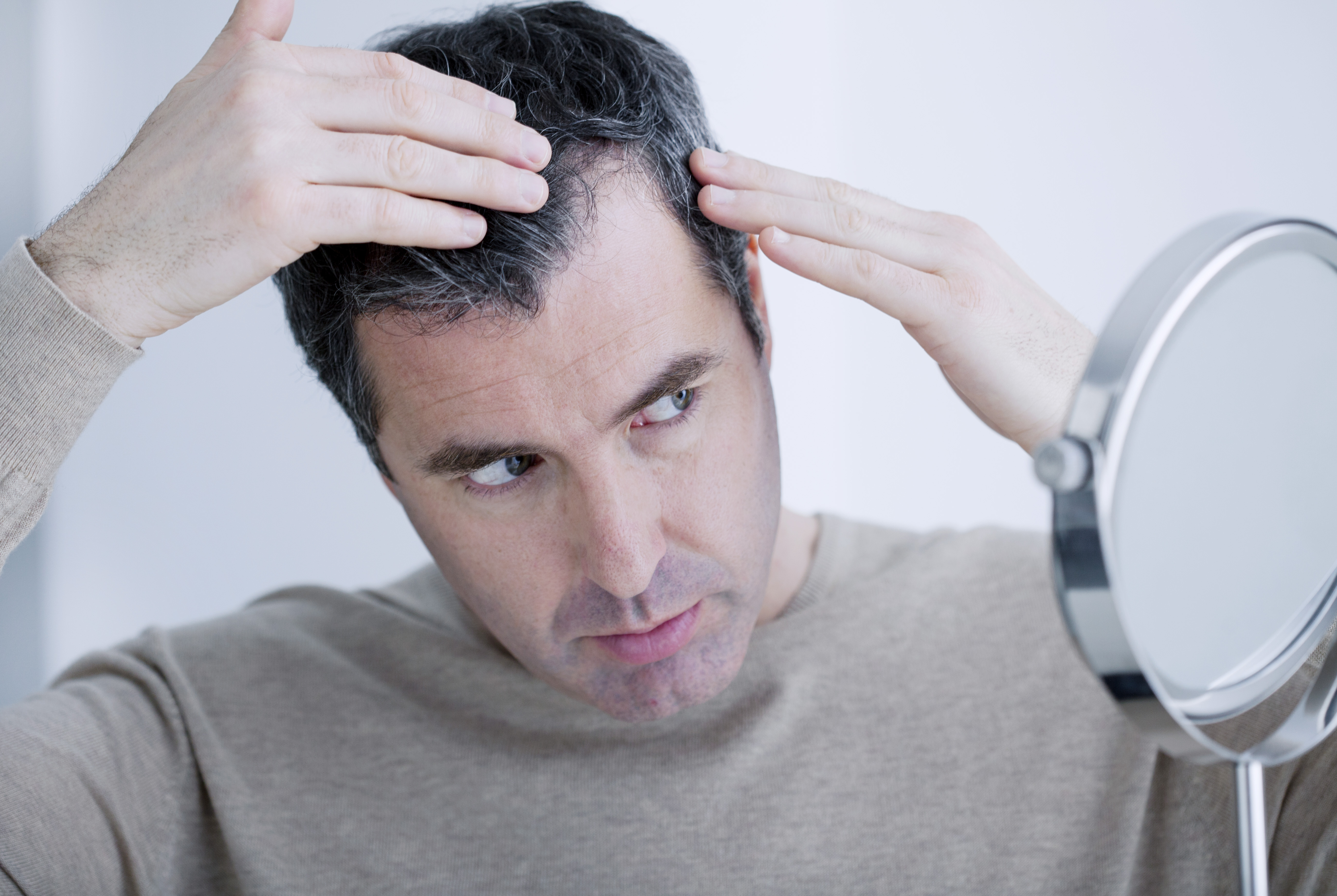
There are many reasons for a gradual shedding or thinning of hair, and people react differently to the early signs. But you have choices, explains Colin Dang in our latest blog.
Whatever your age, gender, or lifestyle, the first signs of thinning hair or hair loss, are not good news. It’s not easy to get reliable hair loss statistics, as many conditions cause the same results, and all are grouped under the generic ‘baldness’ tag.
However, many agree that hair loss affects 50% of men over the age of 50, and it’s the same percentage for women over 65, yet hair loss can start for some in their 20s – an increasing problem for the mental health of younger people in an Instagram age where appearances matter.
Importantly, there is money to be made from promising to resolve hair loss and companies will use the figures that suit their agenda and promotional material.
However, as an online pharmacy rather than a single-issue commercial company, we have no agenda beyond advice and a potential solution, so we prefer to reference the NHS website.
The NHS explain that some hair loss is perfectly normal, as we shed between 50 and 100 hairs a day, often without noticing. But it can indicate an underlying medical condition, such as male and female pattern baldness. This permanent hair loss is caused by a hormone called DHT, that causes hair follicles to shrink. For this blog, we’ll concentrate on the three most common causes of hair loss.
Androgenetic alopecia
The British Association of Dermatologists recognise male pattern baldness (MPB), or androgenetic alopecia (AGA), as a non-scarring alopecia – alopecia being an autoimmune disorder causing hair loss – which, in men, means frontal recession and vertex thinning. In layman’s terms, ‘receding hairline’, and ‘thinning on top’.
Alopecia areata
When hair is thinning, and falling out in patches, the problem may be alopecia areata, a condition caused by immune system problems. While this often gives way to regrowth after a few months, it can lead to more severe forms of hair loss which cannot be reversed.
Telogen effluvium
Hormonal changes, stress, illness, dietary changes and some medications can also cause thinning hair. Telogen effluvium means slight - and temporary - hair loss. Anagen effluvium is a widespread hair loss across the body, often the result of chemotherapy and radiotherapy, and usually stops once treatment has ceased.
Female pattern baldness
This is often typified by a woman experiencing thinning hair on the top of the head. While, like the male equivalent – androgenetic alopecia – this is hereditary. Up to two-thirds of women experience hair loss after menopause, and less than half make it past age 65 with a full head of hair. The Harvard Medical School has more on this.
This type of hair loss cannot be treated using finasteride, used for MPB. However, it can be treated using minoxidil which we’ll discuss shortly.
So, what’s to be done?
The first thing to offer is perspective. As the NHS points out, most hair loss does not need treatment, being either temporary or a normal part of getting older. There's no cure for male-pattern baldness, but some medications can slow it down.
Certain brands, underpinned by medicines often created to treat an unrelated condition, have some research and plenty of consumer traction behind them.
Prescription-only finasteride works on the hormone itself to slow and, in some cases, reverse hair loss caused by male pattern baldness. Finasteride can also be used to good effect in combination with minoxidil, another popular compound.
There are many treatments available for alopecia areata, that include corticosteroid injections, immunotherapy, and light therapy. They vary in effectiveness and treatments are not cures.
More on minoxidil
The active ingredient in Regaine, available from our online pharmacy, physicians noticed that patients undergoing hypertension treatment in the 1970s displayed hair regrowth when given the drug as an oral treatment. A 2% minoxidil solution was first launched commercially in 1986, to treat male and then female individuals’ AGA, and the 5% solution in 1993.
While no treatment is 100% effective, this white paper, Minoxidil and its use in hair disorders: a review, does record the difference between minoxidil treatment against a placebo group. Alternative research suggests those using the 5% solution had 45% greater hair coverage after 48 weeks than those who used the smaller amount.
In the States, minoxidil is FDA approved for androgenetic alopecia and female pattern hair loss, while incidental applications include telogen effluvium, chemotherapy-induced alopecia, and beard and eyebrow enhancements.
Hair loss shampoos
Regaine at Coda
Coda offers Regaine in three formats: three 60ml sachets of a 5% minoxidil solution, a single months’ solution of 5% minoxidil solution, and a month’s supply of the 2% solution, Regaine for women.
Is minoxidil bad for you?
Minoxidil increases blood supply, which can affect your heart rate. Those with pre-existing heart conditions should note that products containing minoxidil can increase heart rate and cause chest pains. As is the case with most medicines, those receiving treatment for relevant heart conditions should seek approval from their GP. Of course, as your friendly local and online pharmacy, we’re always happy to advise what might work best for you.